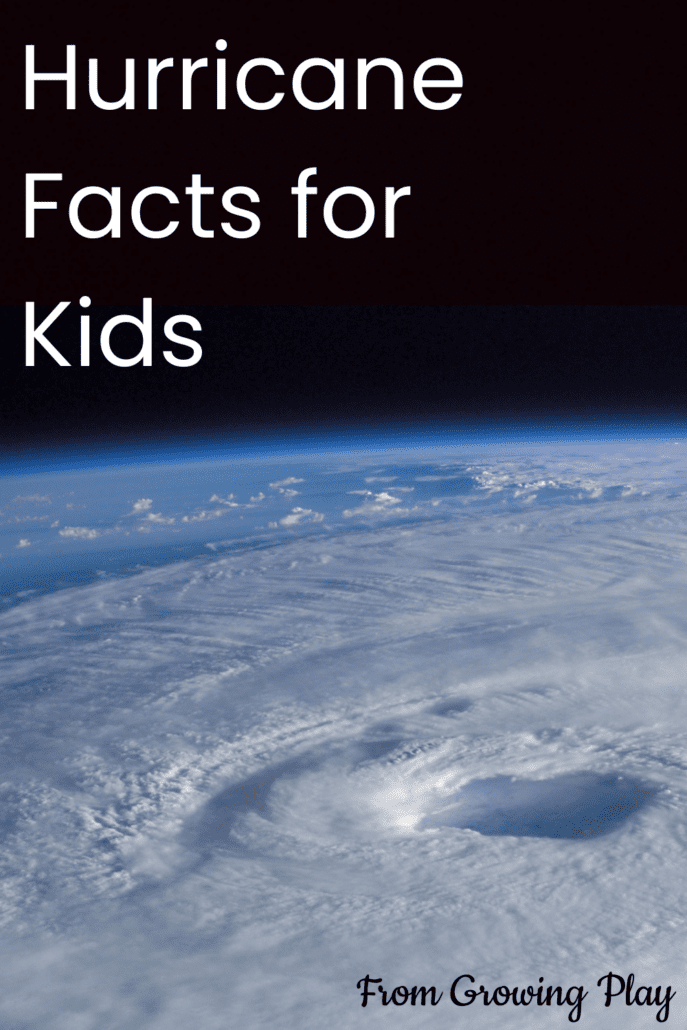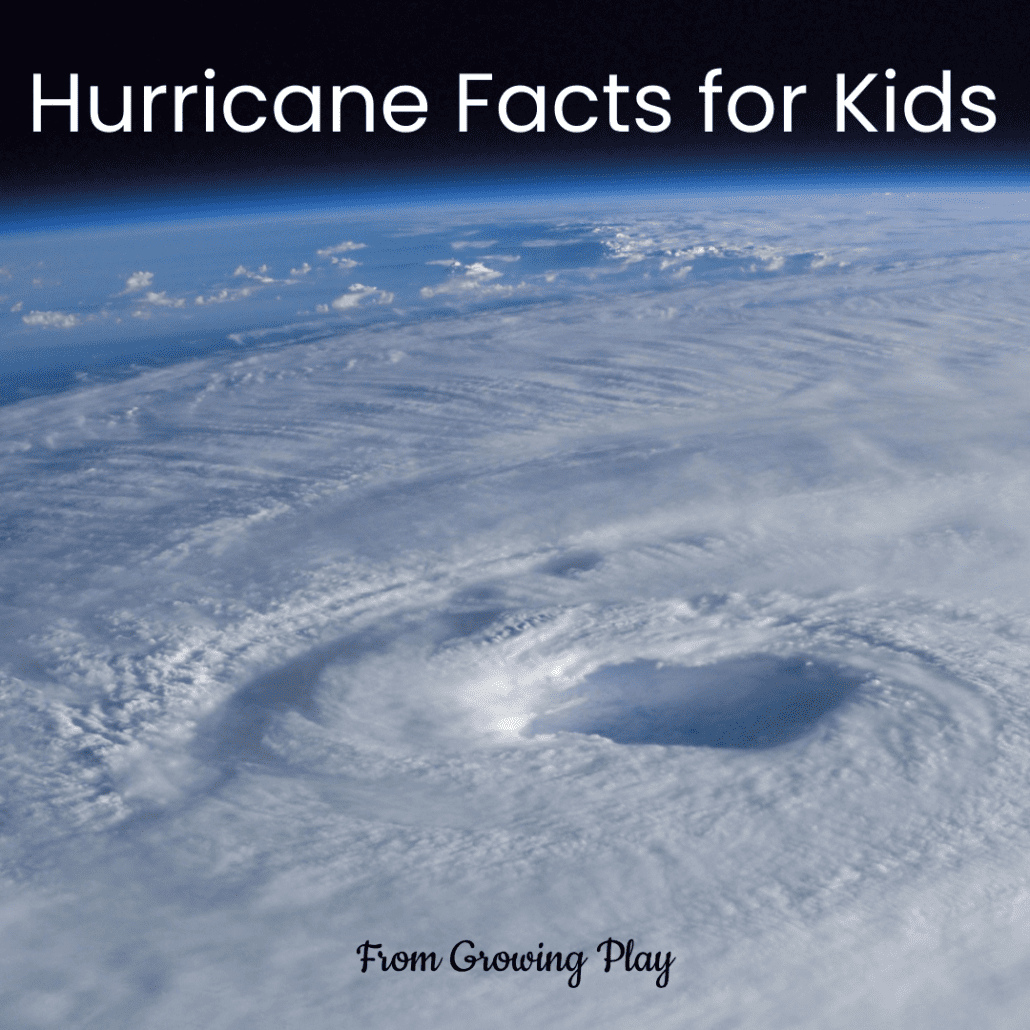Hurricane Facts for Kids

Hurricanes are a type of storm that can be very damaging, especially in coastal areas. Hurricanes can bring torrential rain, heavy winds, and much damage. If you want to learn more about this severe weather, keep reading! We will share with you a list of hurricane facts for kids from hurricane formation, to hurricane strength, and hurricane damage. We have even included a list of what to do to stay safe during a hurricane. Happy reading!
What is a Hurricane?
Hurricanes are large storms that form over warm ocean waters.
A hurricane is made up of thunderstorms, strong winds, and lots of rain.
The Eye of the Hurricane
The center of the hurricane is known as the eye of the storm. When an area is under the center of the storm it usually faces the least winds and lowest rainfall. However, the eye wall which surrounds the eye of a hurricane brings about the heaviest winds and most powerful thunderstorms.
Hurricane Facts for Kids – Hurricane Formation
Hurricanes can form anywhere in the world where there is water that is at least 80 degrees Fahrenheit.
It takes a hurricane about 24 hours to fully form. That’s an entire day!
Hurricane Facts for Kids – Hurricane Season
Hurricane season runs from June to November in the Northern Hemisphere and from December to April in the Southern Hemisphere.
Hurricane season in the Pacific Ocean typically has the most typhoons. Typhoons are tropical cyclones, which are most prevalent in the Northwest Pacific Basin.
The hurricane season in the North Atlantic Ocean typically has the most hurricanes. The Atlantic hurricane season is aligned with the hurricane season of the Northern Hemisphere, which is from June to November.
Hurricane Facts for Kids – Wind
The speed of the wind during a hurricane can range from 75 miles to hour to over 157 miles per hour. Those are some powerful winds!
High winds and thunderstorms during a hurricane can lead to tornadoes. The hurricane with the most tornadoes ever recorded was Hurricane Irma, which spawned 29 tornadoes in September 2017.
Damage from Hurricanes
Hurricanes can cause dangerous storm surges, which are large waves that can reach up to 23 feet high! Those high waves are about five times as tall as you!
A hurricane’s rains can cause flash flooding, which is when water rises quickly. This can cause damage to roads, homes, and businesses.
Hurricane winds can blow down trees and power lines, causing widespread power outages.
Hurricanes can also affect the environment, including disrupting wildlife and damaging coral reefs.
The History of Hurricanes
One of the most powerful hurricanes ever recorded was Hurricane Irma, which had violent winds of up to 185 mph when it made landfall in the Caribbean in September 2017.
Hurricane Katrina was the deadliest and costliest hurricane in US history. It caused over 1,800 deaths and lead to more than $108 billion in damage.
Hurricane Facts for Kids – Hurricane Naming
Hurricanes are often given different names by the World Meteorological Organization so they can be deciphered between other hurricanes and tropical storms.
Hurricanes are usually named in alphabetical order meaning some hurricanes have names that start with the letter “A” (e.g., Andrea, Allen) while others have names that start with the letter “W” (e.g., Wilma, Whitney).
In the United States, hurricane names are only retired if they cause a lot of damage (e.g., Katrina, Sandy).

Spring Word Search Printable Poster
More Interesting Facts About Hurricanes
Some hurricanes dissipate (die out) after just a few hours, while others can last for days or even weeks.
When a hurricane makes landfall, it often loses strength and becomes a tropical storm or a tropical depression.
Hurricanes can sometimes lead to El Niño events, which are weather patterns that cause warmer-than-usual temperatures in the Pacific Ocean.
While are hurricanes are devasting events, they are also an important part of the Earth’s weather system, playing a role in regulating the Earth’s temperature.
We hope you enjoyed these hurricane facts for kids! Be sure to stay safe during hurricane season and know what to do if one threatens your area.
Tips to Help You Stay Safe During a Hurricane
Here are some tips to help you stay safe during a hurricane:
– Stay indoors as much as possible
– Avoid flooded areas
– Do not drive through flood waters
– Do not touch downed power lines
– Listen to local authorities for updates and instructions
Stay safe out there and remember to always keep learning!
WANT MORE FUN FACTS FOR KIDS?
Check our these fun facts for kids here and browse all the other topics at the bottom of the post.
Read about tornadoes here.
Download FREE RAIN ACTIVITIES here.
Read about Flood Facts for Kids



